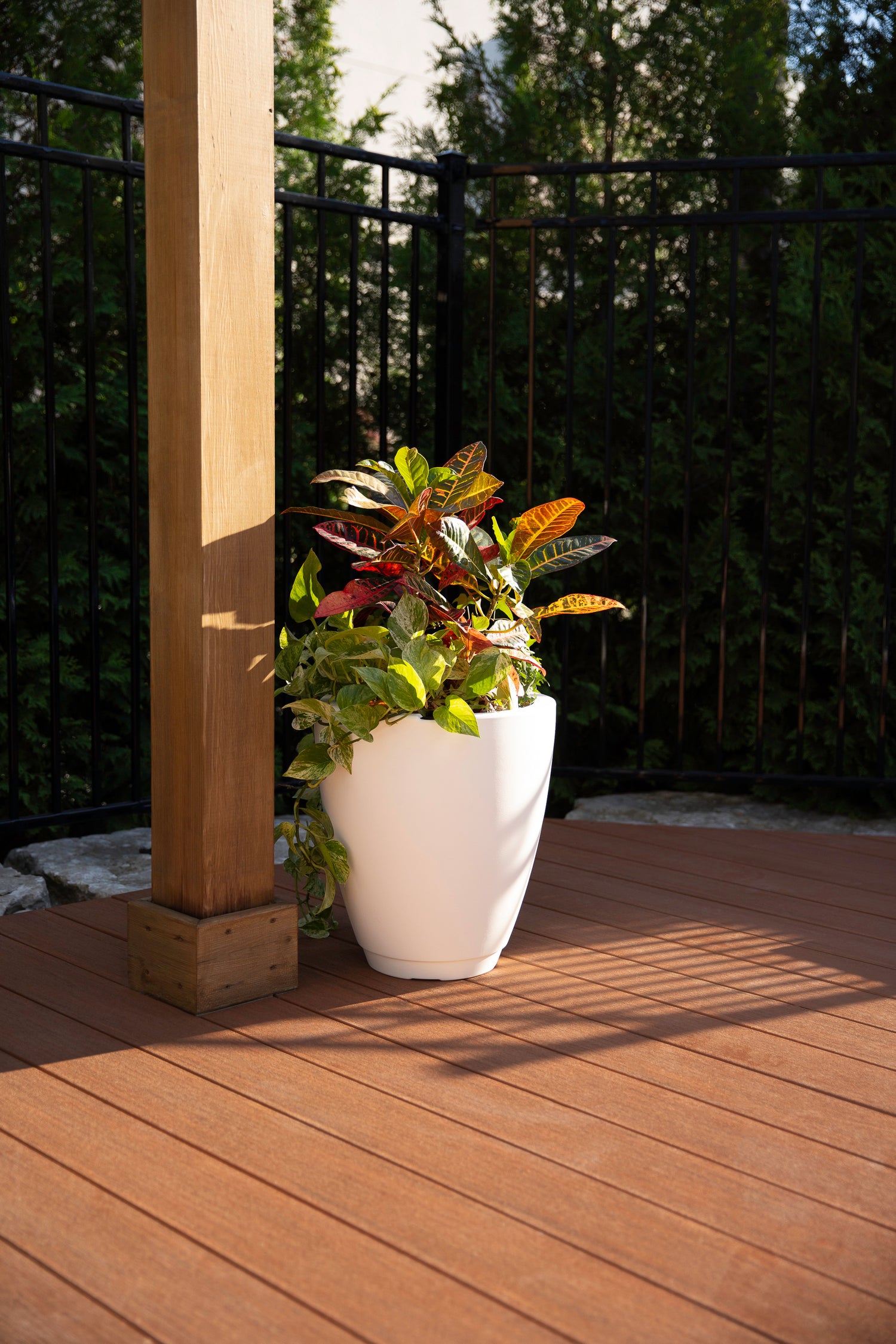Fall is a special time for gardeners. The cooler temperatures, the colorful trees, and the fallen leaves create an ambiance that reminds us of how beautiful nature truly can be. But amidst the beauty, there’s work to be done. If you're looking to apply the best organic farming techniques, then it's the perfect time to consider planting cover crops.
What are Cover Crops?
Cover crops, often known as "green manure," are plants sown in gardens or fields to manage soil health, fertility, and quality. While some typically leave their garden soil exposed during the offseason you should consider planting cover crops. The cover crops will root and provide many benefits to your yield while also providing them with stronger plant health.
Origins and History
The practice of using cover crops is not new. Ancient civilizations, understanding the concept of soil exhaustion, turned to certain plants to rejuvenate their fields. This newfound knowledge helped with what would become an important component in sustainable agriculture.
Benefits Cover Crops
Cover crops bring many benefits to the land and its cultivators. From cutting agricultural expenses to environmental health, cover crops are a key to sustainable farming practices. Let's dive into the advantages they offer.

1. Spend Less on Fertilizers
The introduction of certain cover crops, particularly leguminous ones, can dramatically reduce the need for chemical fertilizers. By naturally fixing nitrogen from the atmosphere and converting it into a form plant can use, they minimize the need for additional nitrogenous fertilizers. This can result lower farming costs and a reduced carbon footprint from fertilizer production and transportation.
2. Minimizing on Chemicals
With cover crops acting as a natural barrier, the emergence of weeds is decreased. Certain cover crops can also help with repelling pests or serve as trap crops, luring pests away from your crops. This decreases the requirement for pesticides which leads to both economic savings and a reduction of chemicals on the land.
3. Stronger Yields through Soil Health
Healthy soil is key to a strong yield. Cover crops enrich the soil with organic matter, improve its structure, and boost the population of beneficial microorganisms. This creates a vibrant soil ecosystem where crops can thrive, directly influencing yield quality and quantity.

4. Guarding Against Soil Erosion
One of the primary roles of cover crops is acting as a shield against the elements such as wind and water. Their roots anchor the soil, preventing it from being washed or blown away. This can conserve the top layer of the soil but also ensure long-term sustainability.
5. Moisture Conservation
In regions prone to dry spells, cover crops play a vital role. Their foliage creates a cover which helps in shielding the soil from direct sunlight and reducing evaporation. The result is moister soil, which is crucial for the main crops
6. Better Water Quality
By preventing soil erosion, cover crops play an indirect but crucial role in keeping water quality. When soil erodes, it can drag along things like chemicals and organic junk that mess up our local water sources. By keeping the soil in place, cover crops ensure that these potential pollutants don't reach our waterways.
 7. Personal Health Benefits
7. Personal Health Benefits
Cover crops offer environmental and personal health benefits. By reducing the need for chemical herbicides and pesticides they ensure that the food you grow will cleaner and safer. In essence, the benefits of cover crops extends further than the soil they grow in. Their contributions benefit many aspects of crop growing, which in turn makes them great assets in the world of sustainable growing.
Planting Your Cover Crops
Let's explore the steps to effectively incorporate cover crops into your fall gardening regime.
1. Finding the Right Crop for Your Garden
The type of cover crop you choose must meet with the soil's requirements and the climate of your region.
Nitrogen Needs: Legumes like clover, peas, and beans have a unique ability to fix atmospheric nitrogen through symbiotic bacteria called rhizobia.
Combatting Erosion: Grassy cover crops like rye, barley, or oats have root systems that act as a web, holding the soil in place.
2. The Perfect Timing
Planting cover crops isn't just about digging and adding to your garden. Timing plays a crucial role. Ideally, choose a timeline that allows these crops to flourish for a minimum of four weeks before the first frost of the season. This time frame lets them establish a strong root system which will help them withstand the winter chill.
 3. Soil Preparation
3. Soil Preparation
Proper preparation of the soil can help amplify the effectiveness of your cover crops.
Clear the Area: Before sowing, ensure the soil is free from leftovers of past crops. This not only makes planting easier but also reduces competition for essential nutrients.
Tilling: Tilling can revitalize the soil, enhancing its aeration. This simple step also offers a better seed-soil relationship, ensuring the seeds are ready to germinate.
4. The Generosity of Sowing
Cover crops are an economical choice, and this affordability can reflect in your planting approach. A dense growth not only maximizes the benefits of cover crops but also ensures a beautiful greenery that's pleasing to the eye.
5. Nourish and Observe
Once your seeds are comfortably in their soil beds, it's time for a thorough watering session. Hydration kickstarts the germination process, and in the days that follow, your primary role is observation. Monitor the soil's moisture levels, especially if the fall season is on the drier side, and water accordingly.
In conclusion, incorporating cover crops into your fall gardening routine is a nod to sustainable and organic farming techniques. The multiple benefits of cover crops, from soil enrichment to erosion control, make them an indispensable tool in a gardener's kit. As you implement these fall gardening tips, know that you're setting the stage for a flourishing spring garden.



